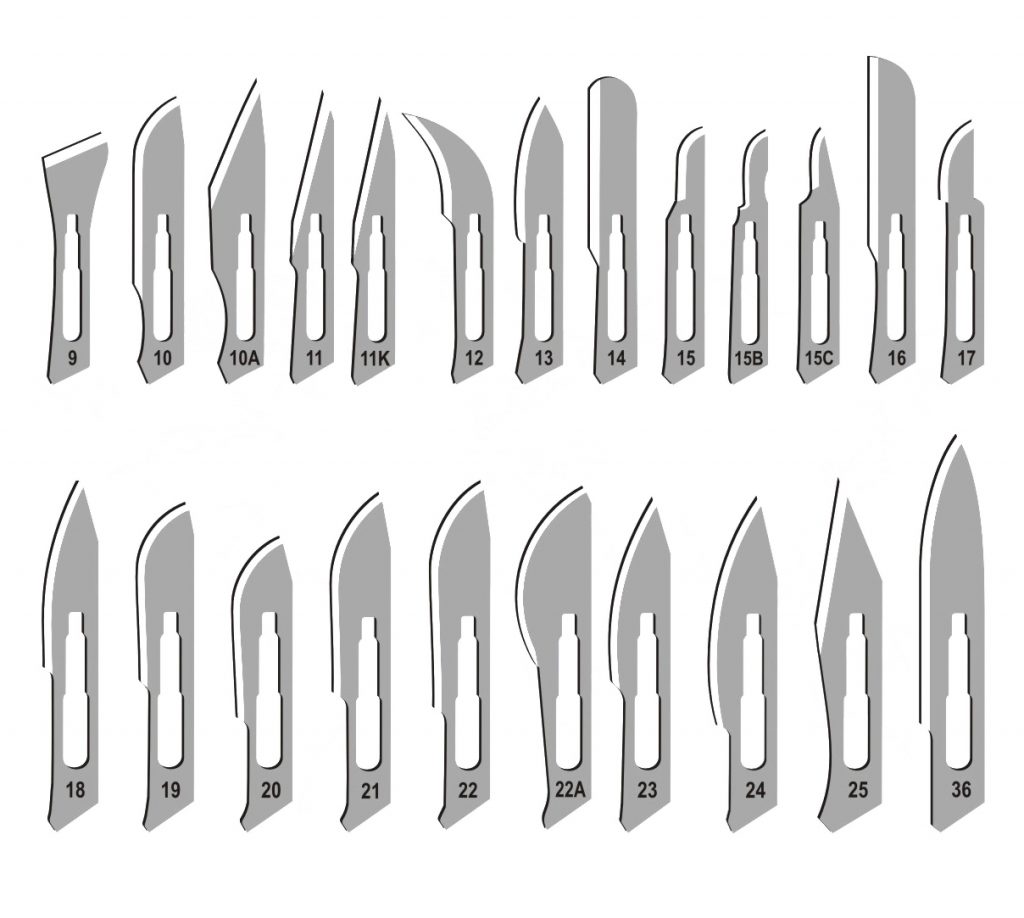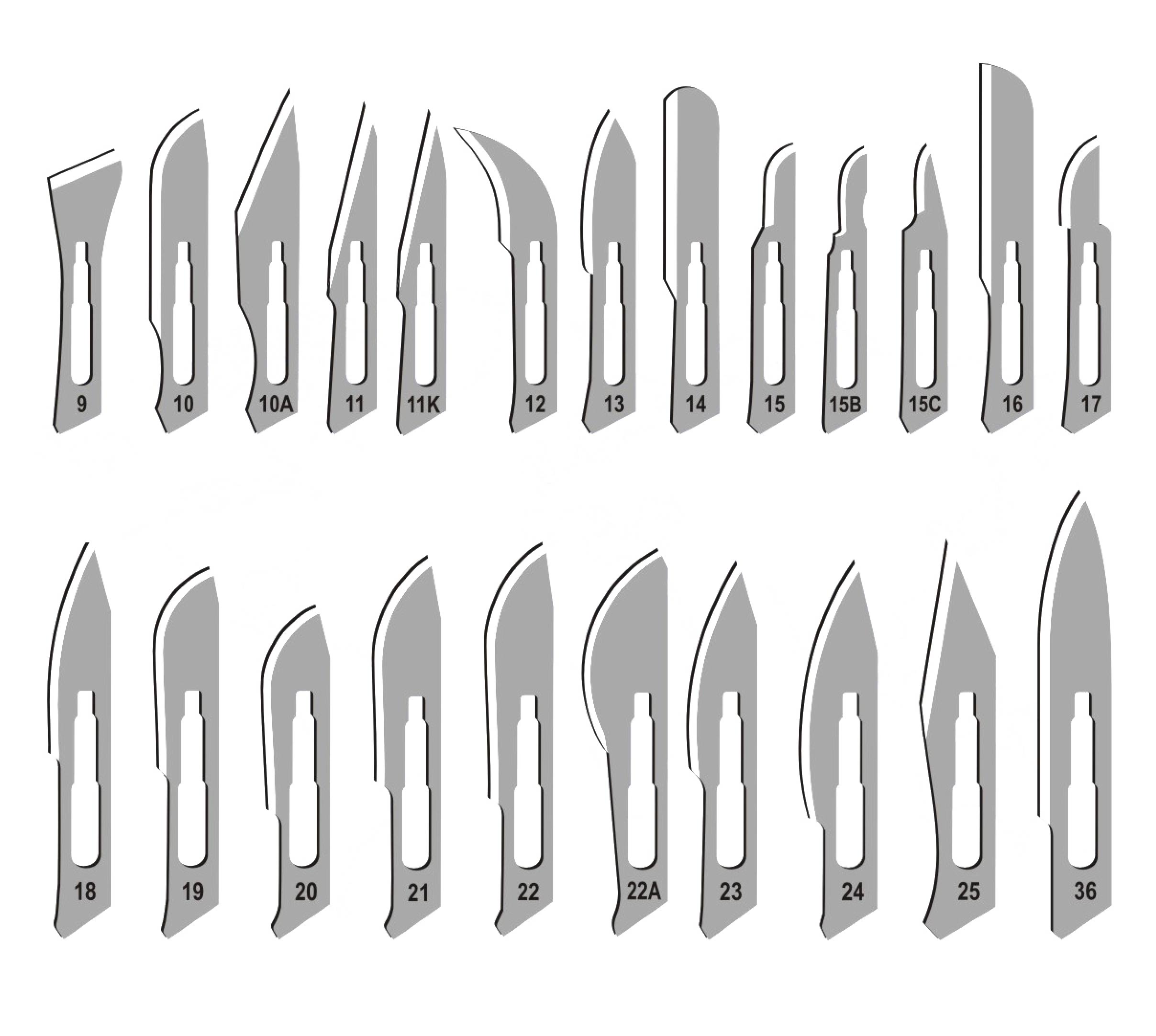No. 10: Generally for making incisions in skin and muscle. Commonly used to cut the skin in abdominal operations.
No. 11: For precision cutting, stripping, sharp angle cuts and also stencil cutting.
No. 12: blade is sometimes utilized as a suture cutter but also for arteriotomies (surgical incision of an artery), parotid surgeries (facial salivary glands), mucosal cuts on a septoplasty (repair of nasal septum) and during cleft palate procedures, ureterolithotomies (calculus removal by incision of the ureter) and pyelolithotomies (surgical incision of the renal pelvis of a kidney for the removal of a kidney stone – also known as a pelviolithotomy).

No.15: blade has a small curved cutting edge and is the most popular blade shape ideal for making short and precise incisions. It is utilized in a variety of surgical procedures including the excision of a skin lesion or recurrent sebaceous cyst and for opening coronary arteries.
No. 15C : The downward angle makes this the preferred blade for working within the chest during cardiac surgery, and is commonly used to make the distal arteriotomy during coronary artery bypass grafting.
No. 16A: For cutting stencils, scoring and etching
No. 17: For narrow cuts
No. 18: For deep cuts and scraping
No. 20: A larger version of the #10 blade, with a curved cutting edge and a flat, unsharpened back edge. Also used in general and orthopaedic surgery.
No. 22-26: Used for skin incisions in both cardiac and thoracic surgery, and to cut the bronchus in lung resection surgery.
No. 36: Used in general surgery, but also within a Laboratory setting for Histology and Histopathology
Can you add to this list?
Kindly post your comments below..

